In 2016, Sarah Holmes Bookbinder and her husband, Paul Bookbinder, got a phone call from a friend who had found two orphaned baby raccoons. Could the Bookbinders take them?
It wasn’t an unusual request. Paul is a veterinary surgeon, and Sarah managed his practice, the Upstate Veterinary Surgical Center in Canastota.
People brought them injured wild animals all the time: deer, pigeons, rabbits.
But raccoons hold a special place in their hearts. The Bookbinders even had raccoons engraved on their wedding rings.
So when they first saw the orphaned baby raccoons, they instantly fell in love with them.
They put the two kits, which were about 10 weeks old, in a cage inside their garage and began searching for a wildlife rehabilitator who could take them in. But none were available.
The pool of wildlife rehabbers licensed to keep raccoons in New York is small. The state Department of Environmental Conservation classifies raccoons as a ‘Rabies Vector Species.’ Rehabbers need a special license to care for them.
“We eventually learned that there’s a dire, dire shortage of raccoon rehabbers in New York state,” Sarah said.
Meanwhile, the Bookbinders cared for the baby raccoons under Paul’s veterinary license. But one soon died, and they were forced to euthanize its sibling.
“We were devastated not to be able to save these animals,” Sarah said. “It was quite a life changing experience for us.”
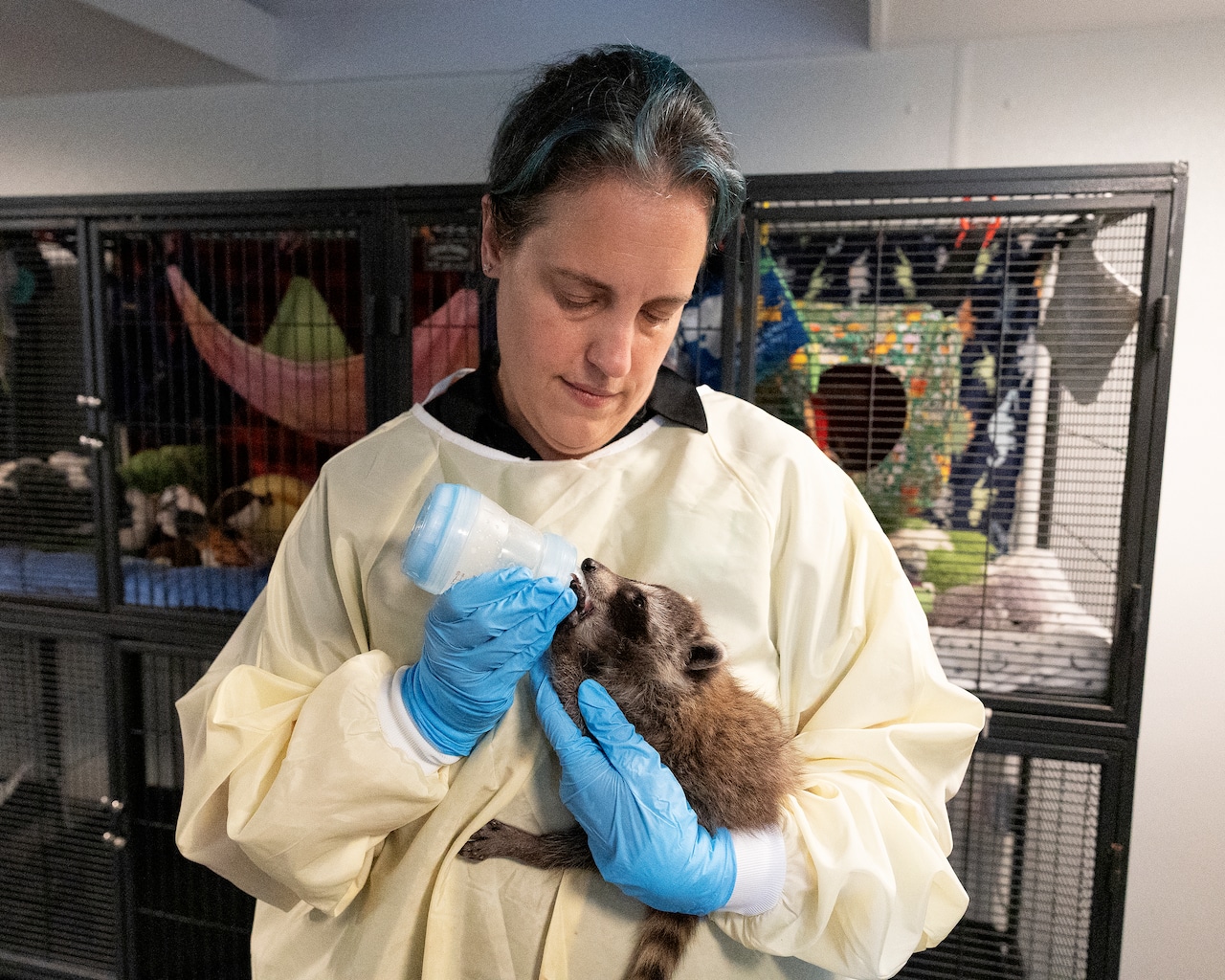 Sarah Holmes Bookbinder, executive director of the Charles N. Gordon
Sarah Holmes Bookbinder, executive director of the Charles N. Gordon
Wildlife Rehabilitation Center in Earlville, once fed raccoons under her care 236 bottles per day.Steven M FeatherstoneThe raccoon power couple
Determined to never let it happen again, Bookbinder set out to learn everything she could about raccoon rehab.
In 2018 she attained her Class II Rabies Vector Species license, allowing her to do hands-on care, and to train other rehabbers.
That same year, the Bookbinders bought a run-down hunting camp on 53 wooded acres in Earlville, in southern Madison County. A year later they sold their house in Hamilton, moved to Earlville, and slowly began transforming the property into a wildlife rehab facility.
Paul now commutes to Canastota, while Sarah runs the Charles N. Gordon Wildlife Rehabilitation Center, named after Paul’s uncle, a lover of wildlife who left them a small inheritance that got the endeavor off the ground.
The pair are New York’s undisputed raccoon power couple. In the nine years since their hearts were shattered when those two baby raccoons died in their care, they’ve saved hundreds of orphaned and injured raccoons.
“We get referrals from all corners of the state,” Sarah said. “All the wildlife hotlines refer to us. Everybody knows we’re sort of the raccoon people.”
But the Bookbinders are only getting started. They envision the center not only as a rehab facility, but a clearinghouse for all things raccoon related, including medical treatment, academic research, training, and licensing.
“Our dream is to have so many rehabbers licensed in New York state for raccoons that we can all do a modest amount, like 10 or 20, and then we can have a little bit of a life,” Sarah said, only half joking.
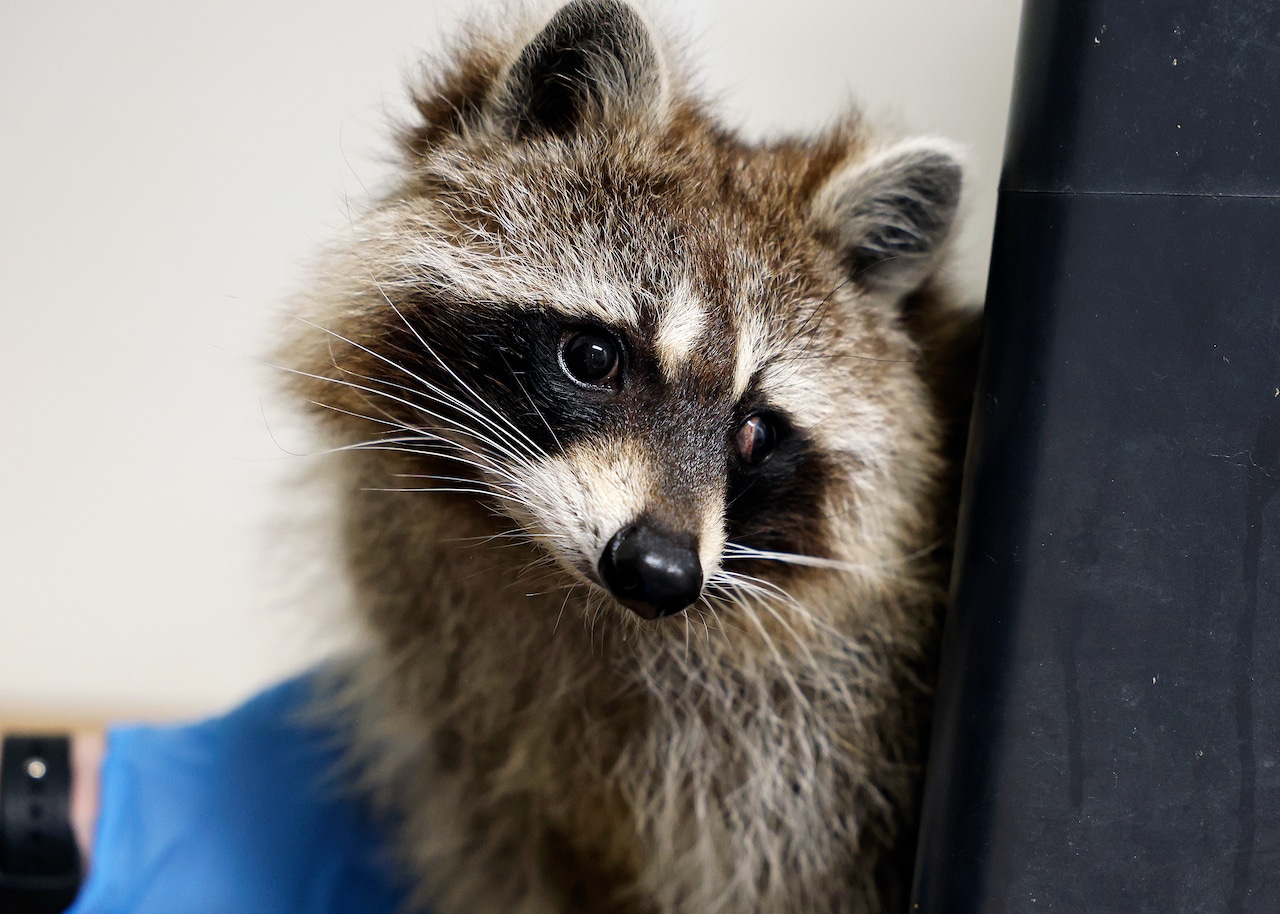 Junebug was born blind and now permanently resides at the center as a non-releaseable educational raccoon.Steven M Featherstone‘It gets absolutely crazy in here’
Junebug was born blind and now permanently resides at the center as a non-releaseable educational raccoon.Steven M Featherstone‘It gets absolutely crazy in here’
The Charles N. Gordon Wildlife Rehabilitation Center raises and releases 40-50 baby raccoons every year.
It all begins in spring, when mother raccoons are having litters (males don’t contribute to the care or protection of their young).
Mothers get separated from their babies—mostly from people shooting, relocating, or running them over—and that’s when the calls start pouring in.
“It gets absolutely crazy in here,” said Sarah Holmes Bookbinder. “I mean, we don’t sleep. We just tell our families and our friends, like, if you love me, you understand that this is what I need to do with my life.”
On a recent morning, Bookbinder put on a yellow hospital gown and blue nitrile gloves as six 10-week-old raccoon kits in cages stacked against the wall tumbled over each other, screeching loudly to get her attention.
“I’m getting a woot-woot,” Bookbinder said. “They know me, that’s the mom call.”
The gloves and gown prevent contact with raccoon saliva, which can harbor the rabies virus. Posted outside the doors of dozens of structures around the center are signs which read: DO NOT ENTER: RABIES VECTOR CONTAINMENT AREA.
Using a syringe, Bookbinder squirted an ounce of formula into a bottle and stuck it in the microwave for 30 seconds. Then she reached into the cage, gently pulled out a baby raccoon, and held it against her chest.
“I’ve never had human children, and I think this really hit that maternal point in me,” she said, gazing down at the kit as it sucked greedily at the bottle. “I think I was meant to be a raccoon mom instead.”
After the kit polished off the bottle, she put it back in the cage and pulled out another kit, and another, until they’d all been fed. She did this four times a day.
“My first year, I was doing 236 bottles a day,” Bookbinder said. “As soon as you stop, you have to start again because you have to mix the formula, and you have to clean the bottles. You have to sterilize. It just goes around and around.”
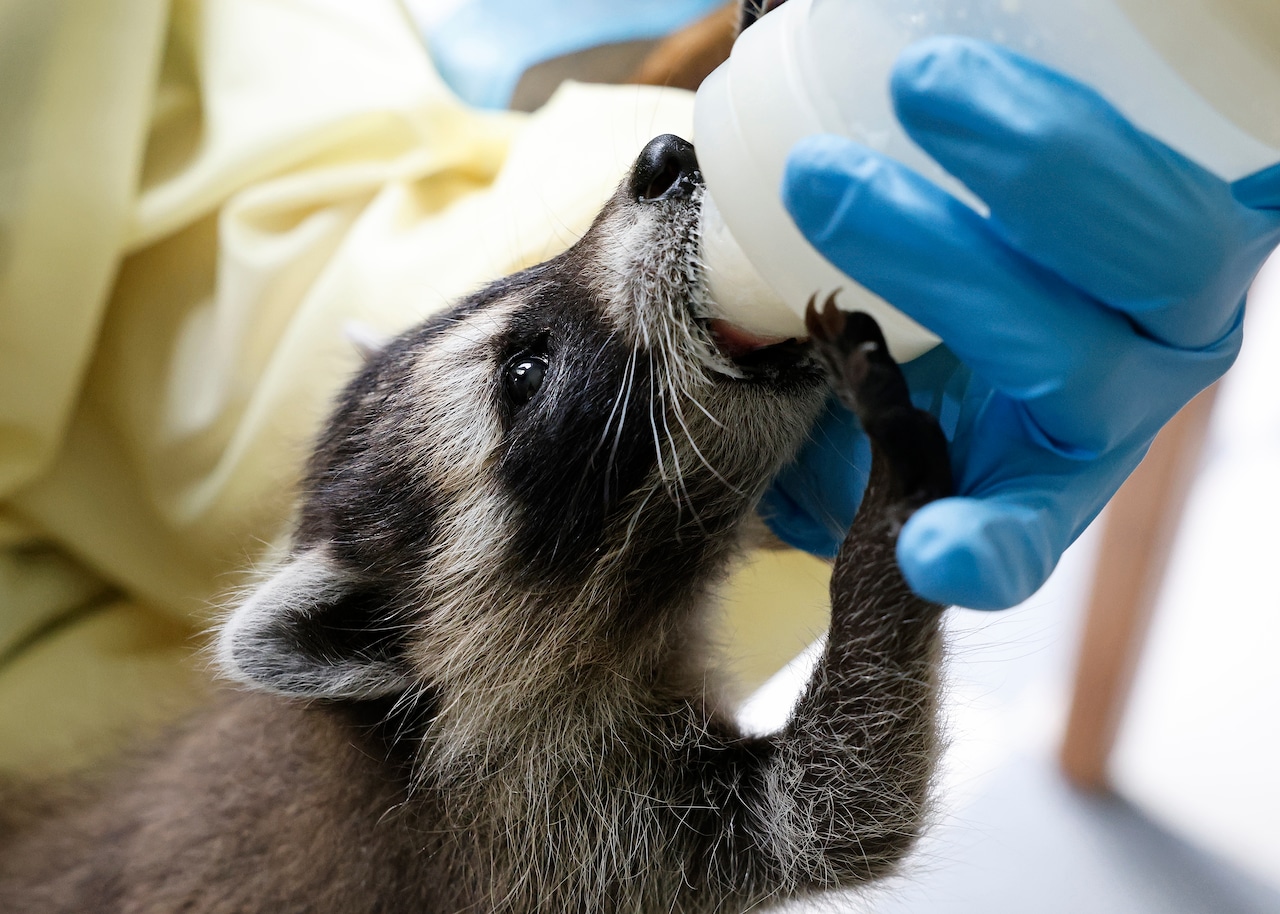
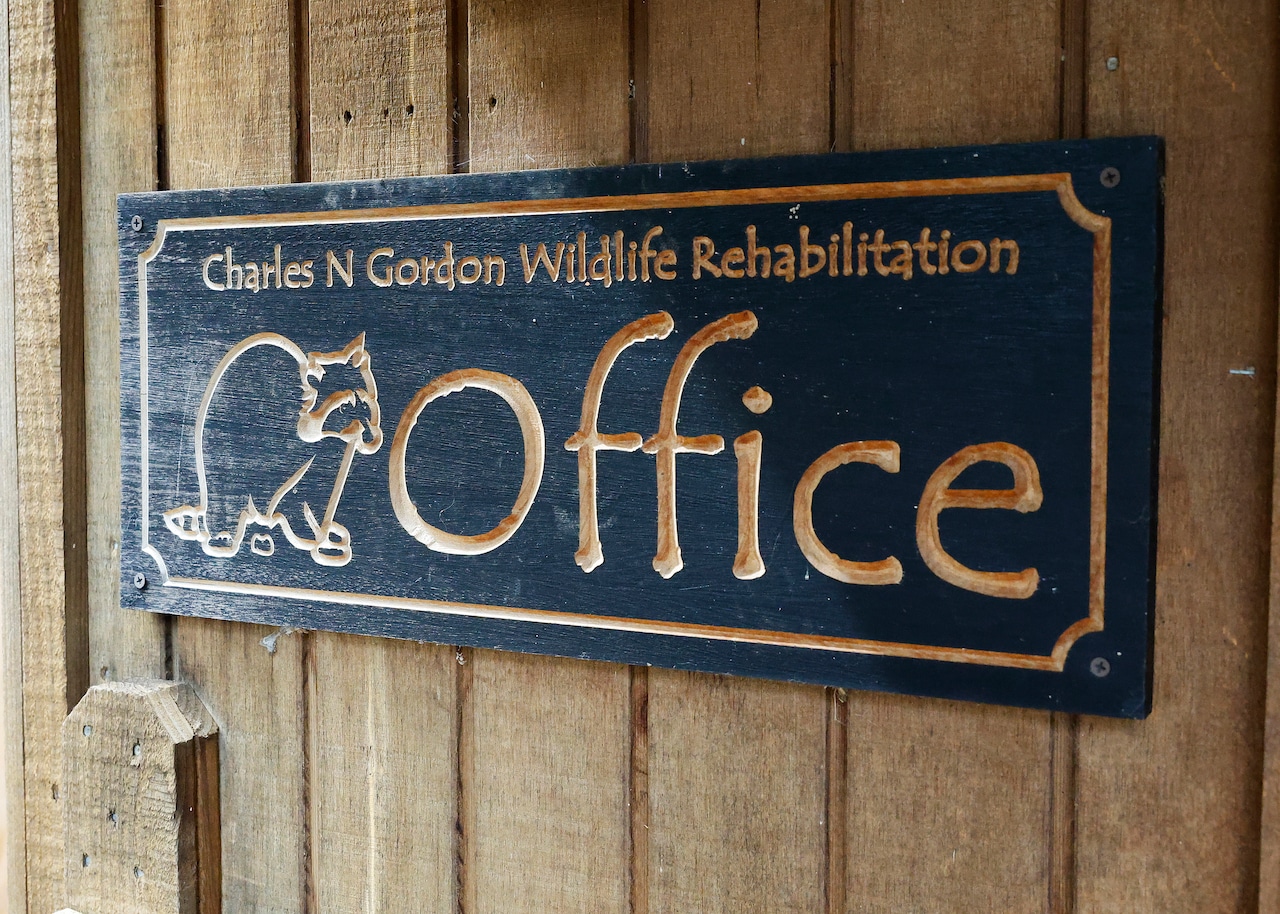
1/20
Inside the CNY raccoon sanctuary where orphaned babies find a second chance
Compassion fatigue
Putting aside the strict state licensing requirements, one of the main reasons there’s a critical shortage of raccoon rehabbers in NY is due to the labor-intensive nature of the job.
It’s not a part-time gig; it’s a 24/7 calling not unlike being a parent. Kits need to be bottle fed anywhere between two to eight times a day depending on their age, for months.
Making things more difficult, all wildlife rehabilitators in NY rely solely on donations. They can’t charge fees. While that might work for some species, few people have the time and resources to care for just one litter of baby raccoons, let alone ten.
So why do they do it?
Raccoon babies can’t see clearly until they’re about five weeks old. Bookbinder remembers the first time one of her kits saw her—really saw her.
“I felt like I’d been electrocuted,” she recalled. “They do look right into your soul. It makes it all worth it.”
Rehabbers do what they do out of love. But it comes at a cost—compassion fatigue.
Bookbinder gets at least 20 calls per day in spring about taking orphaned raccoons. Sometimes she lets voicemail answer because she gets sick at the thought of turning them away. But the center is maxed out.
“It’s impossible to overstate the compassion that rehabbers feel,” Bookbinder said. “They’re all doing this out of pocket. They’re staying up all night, they’re ruining their marriages, they’re putting in their life savings. We’ve all done it. But we do it for the love of those animals.”
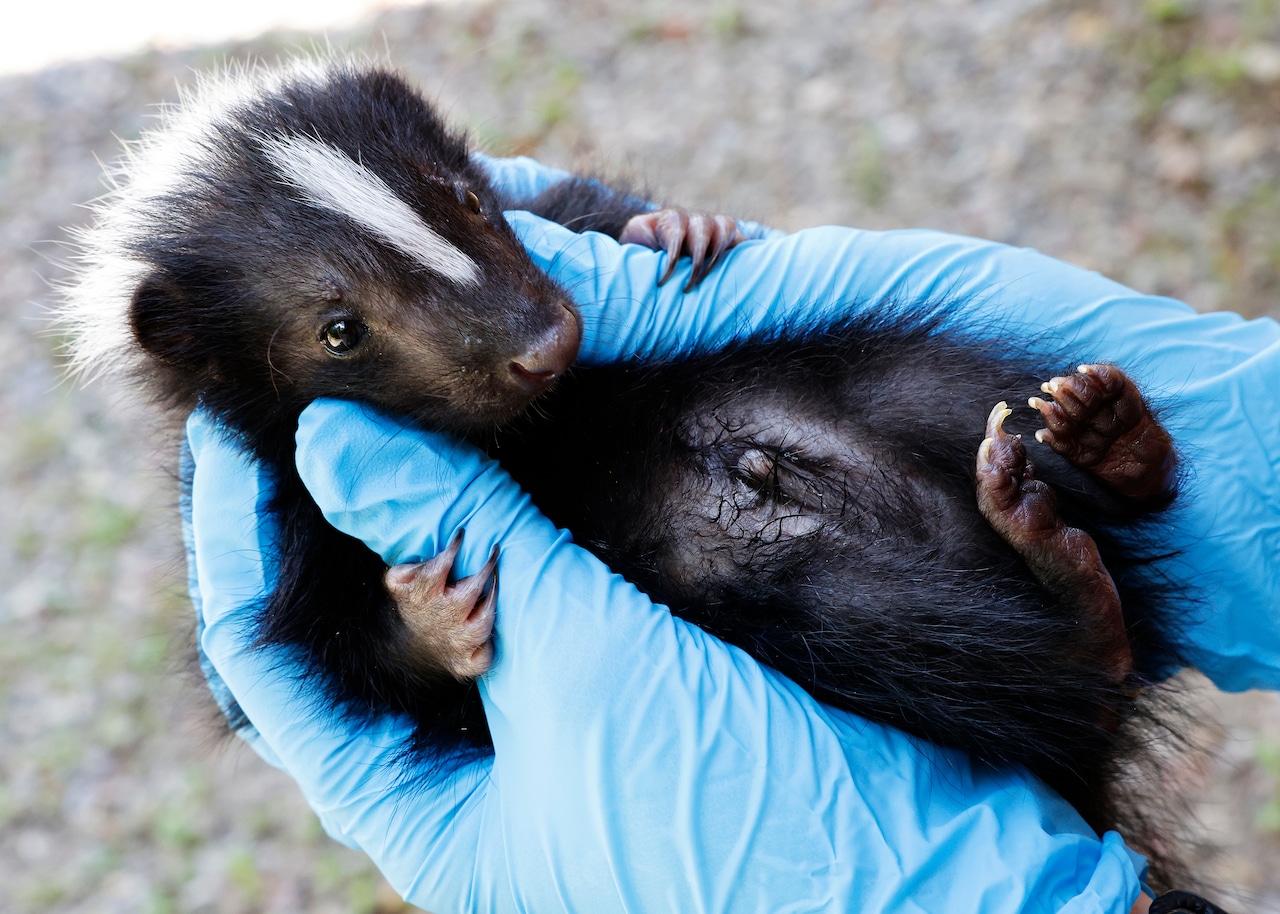 Henry, a baby skunk, is recieiving treatment at the center for paralysis in his back legs.Steven M FeatherstoneLearning the hard way
Henry, a baby skunk, is recieiving treatment at the center for paralysis in his back legs.Steven M FeatherstoneLearning the hard way
The Charles N. Gordon Wildlife Rehabilitation Center has one paid employee on the books, and it’s not Sarah Holmes Bookbinder. That honor goes to Bookbinder’s “soul sister” and former zookeeper, Kate Hannon, who runs a satellite facility in nearby Hubbardsville.
In the past two years the center has received extra help through its partnership with Jefferson Community College’s zoo technology program. Last year the center hosted five interns; this year 15 interns came from as far away as Florida and Utah.
Bookbinder also runs a hands-on volunteer training program called Raccoon Rehab: Baby Bootcamp. The goal of the program is to expand the pool of rehabbers in NY licensed to work with raccoons, but demand, it appears, extends far beyond state borders.
“I didn’t realize it was as pioneering as it was until I started getting applications literally from all over the country,” Bookbinder said. “I’ve got veterinarians from Germany wanting to come here.”
It’s perhaps not surprising that the center has received international interest. The Bookbinders wrote a book of raccoon rehabilitation protocols that’s used by wildlife professionals in 15 countries.
“When we were trying to find a rehabber, there was no information out there, there was no training, there was no pamphlet,” Bookbinder said. “So much of this field is learned as you go, and it’s learned the hard way. I want to spare people making the mistakes I made.”
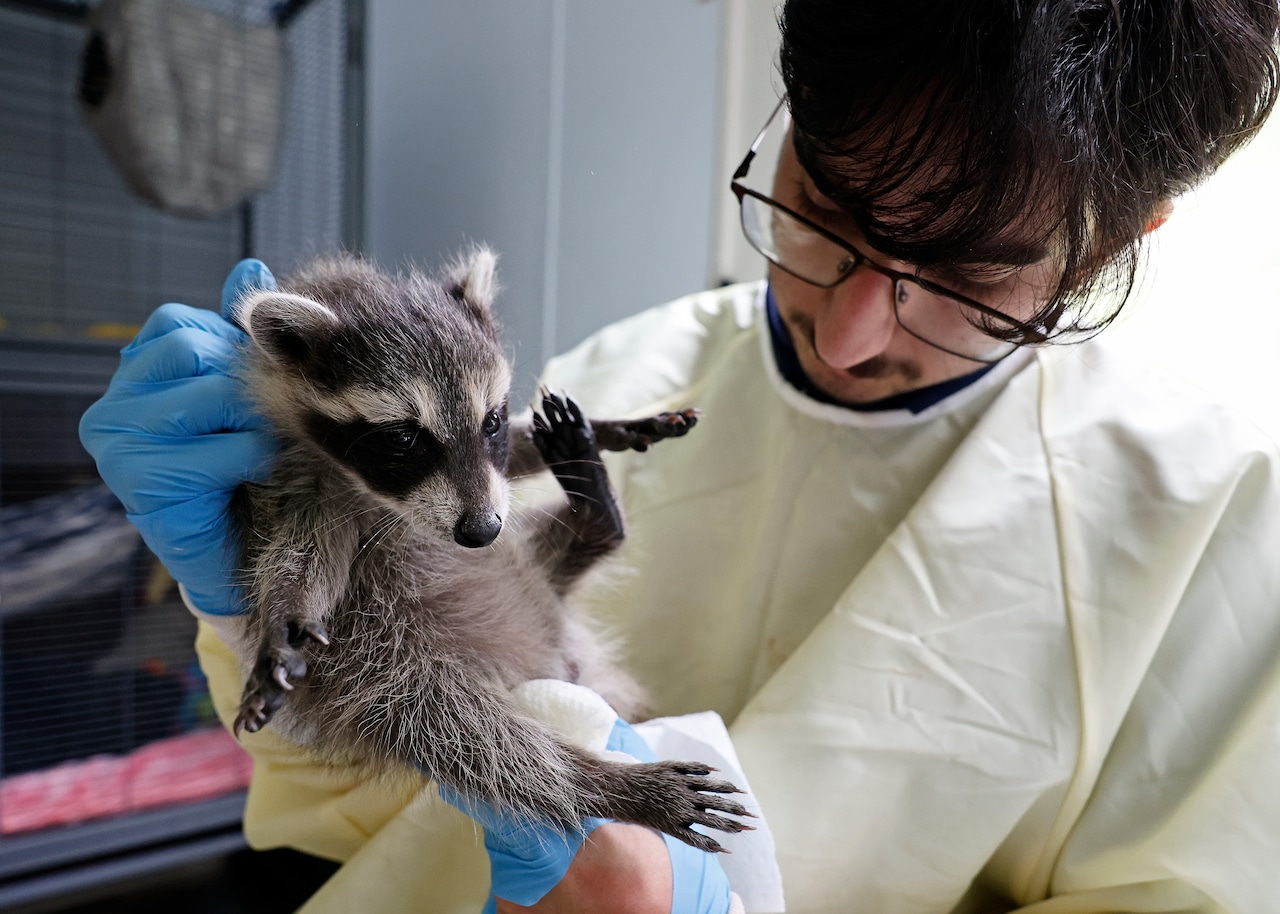 Dean Marvelli, a student intern at the Charles N. Gordon Wildlife Rehabilitation Center, holds a raccoon kit by the scruff to clean it after feeding it a bottle.Steven M FeatherstoneWilding up
Dean Marvelli, a student intern at the Charles N. Gordon Wildlife Rehabilitation Center, holds a raccoon kit by the scruff to clean it after feeding it a bottle.Steven M FeatherstoneWilding up
In five years, the Charles N. Gordon Wildlife Rehabilitation Center has grown from a moldy old hunting camp to a sprawling complex of 32 buildings, including classrooms, nurseries, and a hospital equipped with anesthesia and x-ray machines—all paid for by a combination of personal savings, grants, and donations.
One supply building is filled to the ceiling with plastic tubs of brightly colored toddler toys labelled “enrichment” and sorted by raccoon age group.
The toys keep the kits mentally stimulated while also developing their climbing skills. As they get older, toys and bottles of formula are phased out in favor of tree branches and crayfish.
“They’re just absolutely spectacular animals because of their intelligence and curiosity and strength,” Bookbinder said. “I mean, they’re a ridiculously unlikely apex predator. They look like a basketball with feet when you get them.”
Around 12 weeks of age, kits begin to hit a crucial developmental milestone Bookbinder calls “wilding up.” Normally gregarious kits that are wilding up will start acting shy in the presence of people.
That’s when Bookbinder knows it’s time to transfer kits from their air-conditioned nurseries to outdoor pre-release enclosures.
“It breaks your heart to do it in a way,” she said. “They go off to college and you’re just like, ‘Oh no! What if they need me?!’ But you can’t let yourself go there. You have to really prepare them to be independent because they need that to survive.”
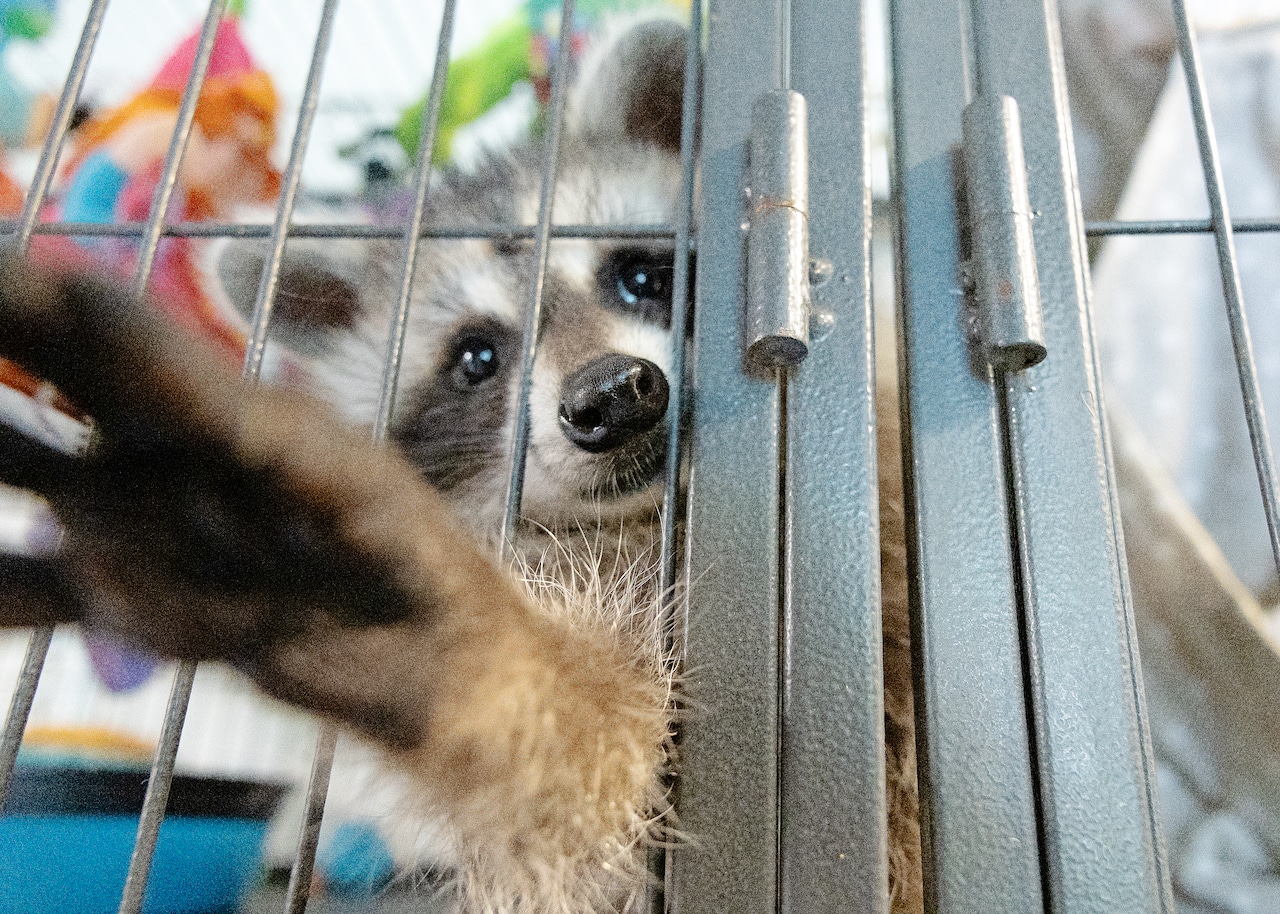 Full of curiousity, a 10-week-old orphaned raccoon at the Charles N. Gordon Wildlife Rehabilitation Center reaches for the camera lens.Steven M FeatherstoneRelease
Full of curiousity, a 10-week-old orphaned raccoon at the Charles N. Gordon Wildlife Rehabilitation Center reaches for the camera lens.Steven M FeatherstoneRelease
Sixteen pre-release enclosures dot the woods 50 yards behind the Bookbinder’s home at the center. They resemble ordinary storage sheds, but there’s nothing ordinary about them.
The sheds are engineered to hold nature’s most notorious escape artists. Two walls are made of double layers of metal mesh. Entrances are double doored and triple locked.
Despite these precautions, the little rapscallions have managed to lock Bookbinder both inside, and outside, the sheds. Pranking mom is apparently part of the wilding up process.
Kits will spend anywhere from two to eight weeks in the sheds with minimal human contact. It’s a chance for them to get used to the sights, sounds, and smells of the natural environment, while letting other forest critters get used to them.
“I grew up thinking you trap and relocate, and that’s really humane, and it’s really not,” Bookbinder said. “They often don’t survive a relocation. You can’t just trap and release a raccoon into some strange city where it doesn’t know where the den sites are, it doesn’t know who’s in charge, doesn’t know what’s going on.”
For Bookbinder’s raccoons, that “city” is a 53-acre tract of forest, swamp, and beaver ponds that belongs to the center. And beyond that—600 acres of state forest. Altogether, a raccoon paradise.
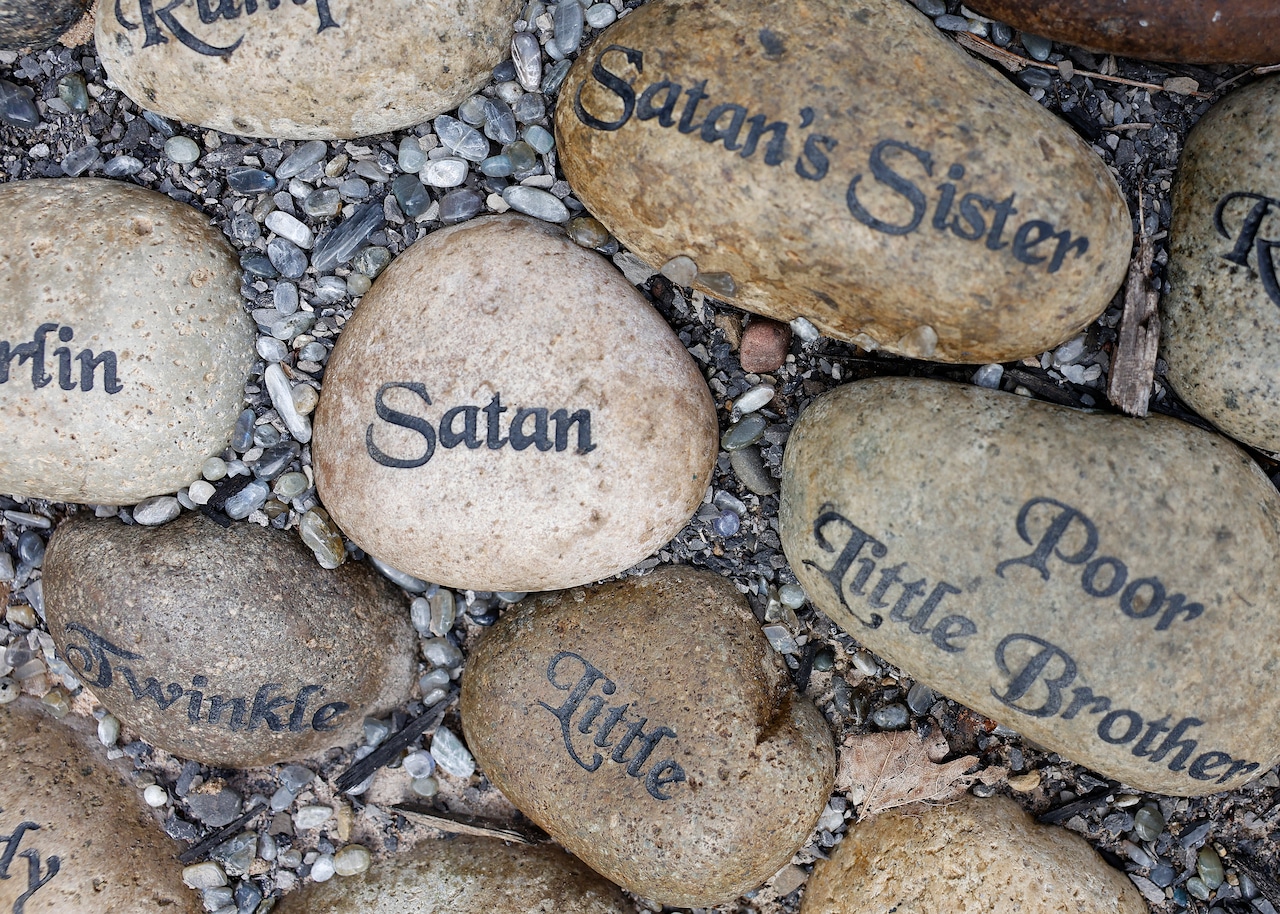 The temporary names of every raccoon that has received care at the center, some 500 animals, are memorialized in a rock garden there.Steven M FeatherstoneAll the names
The temporary names of every raccoon that has received care at the center, some 500 animals, are memorialized in a rock garden there.Steven M FeatherstoneAll the names
Human beings are talented at both killing animals, often wantonly, and attributing human traits to animals they love, like pets and racehorses.
Wildlife rehabbers straddle these contradictory impulses. They deeply love the animals in their care, yet they must resist the urge to anthropomorphize them.
“It’s really frowned upon in rehab work to name your animals,” Bookbinder said. “You don’t want people to get attached to them or think of them in pet terms.”
And yet, Bookbinder names every raccoon that comes through the center. All their names, some 500 and growing, are inscribed on rocks placed in tidy rows in a rock garden at the center.
“If you have a hard day or something and you want to remember that you’re doing good and that you’re putting some love out there, we get to look at this,” she said. “Some are sad, some didn’t make it, but they were all loved.”
Steve Featherstone covers the outdoors. Contact him at sfeatherstone@syracuse.com
If you purchase a product or register for an account through a link on our site, we may receive compensation. By using this site, you consent to our User Agreement and agree that your clicks, interactions, and personal information may be collected, recorded, and/or stored by us and social media and other third-party partners in accordance with our Privacy Policy.
